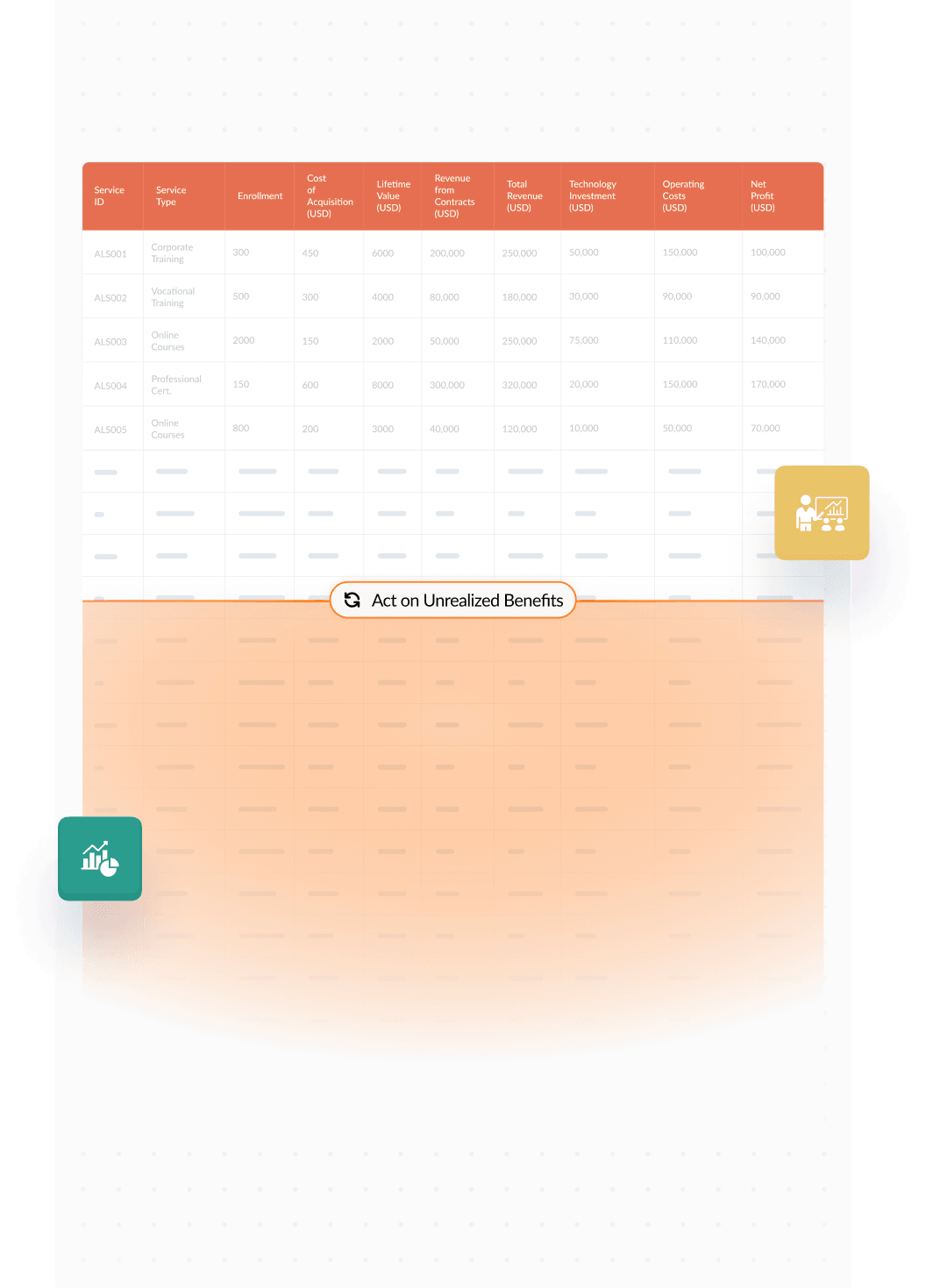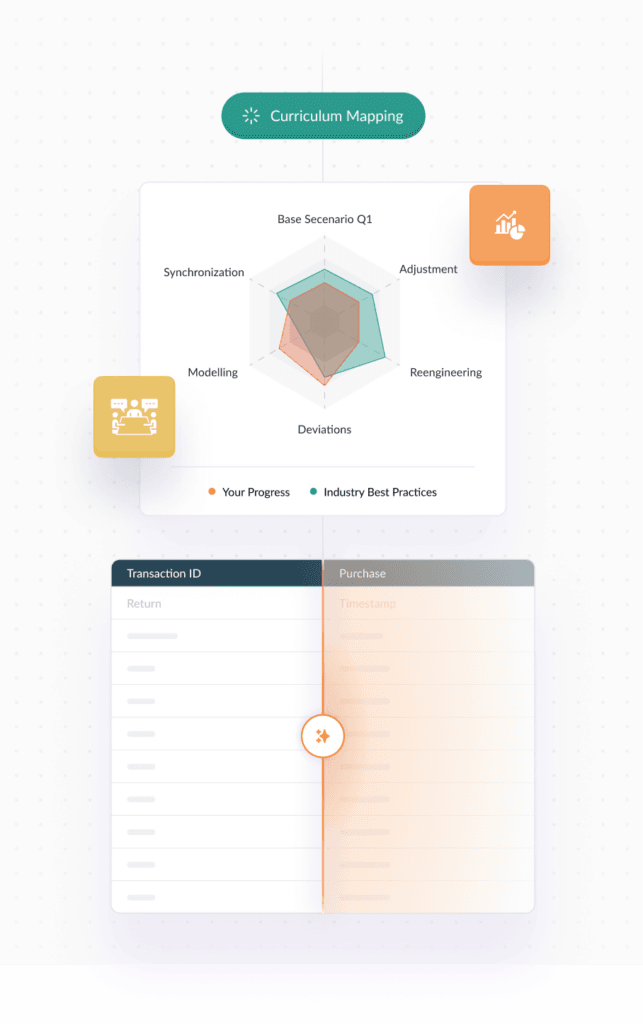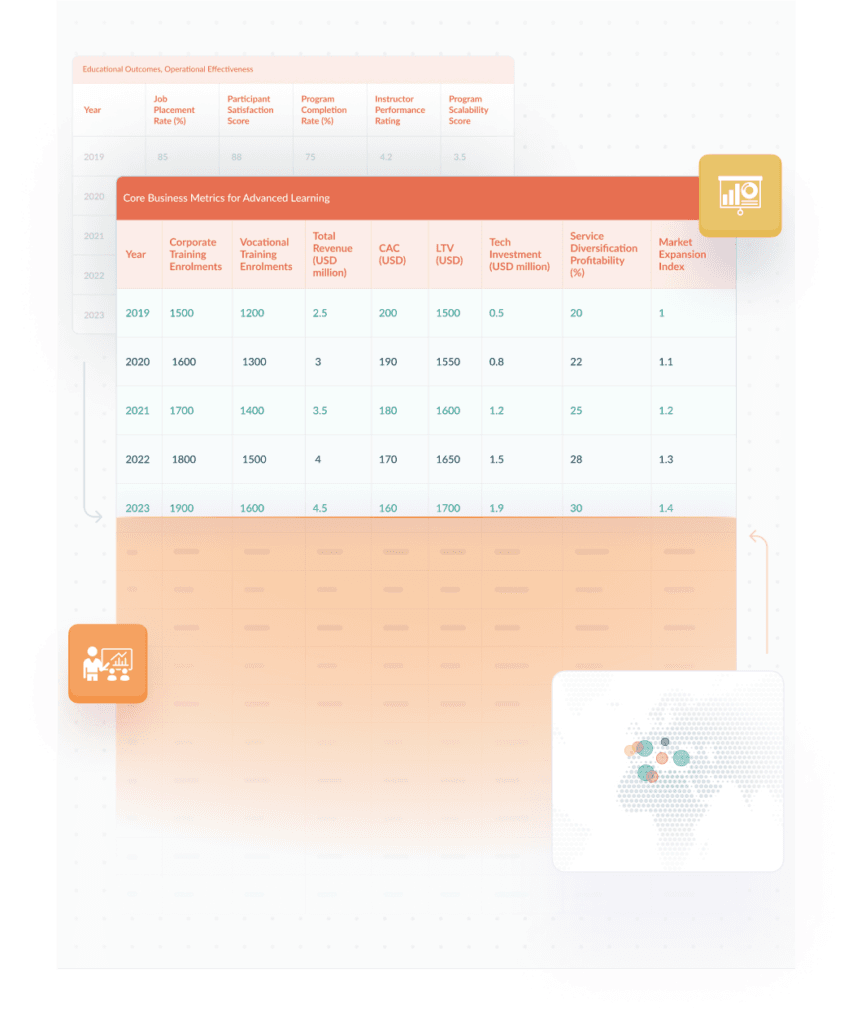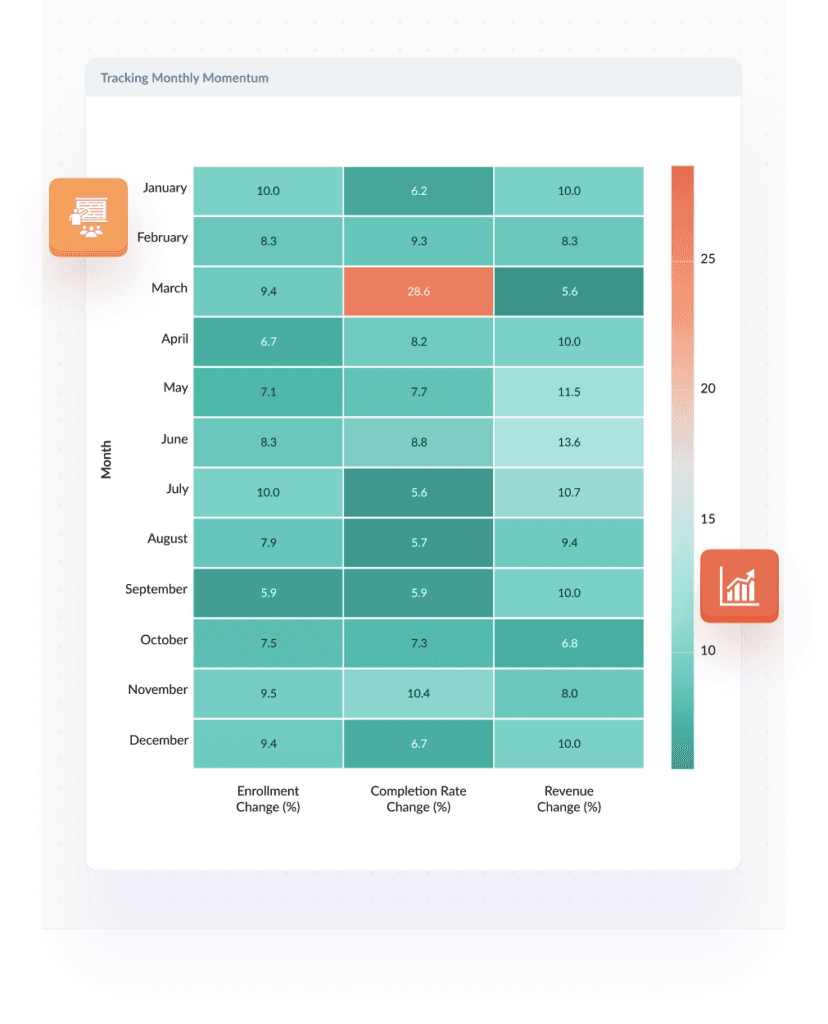Advanced Learning Services
Training & Vocational Training

Financial & Capital Analytics
Service Diversification Analysis: Examine the financial health across different educational programs, including corporate training, vocational training, other professional certifications, and online courses. Assess profitability margins and cost structures for each program type
Customer Acquisition Cost (CAC) and Lifetime Value (LTV): Scrutinize the balance between the cost of acquiring new learners and the projected lifetime value they bring to the service. Optimize marketing strategies to enhance this ratio
Contract and Subscription Revenue Metrics: Analyze the stability and predictability of revenue streams from long-term contracts with corporate clients and subscription models for individual learners
Resource Allocation for Course Development: Optimize investment in course development by evaluating the success rates and learner outcomes of existing courses. Prioritize areas with high growth potential or strong learner demand
Technology and Infrastructure Investment: Balance spending on learning management systems and virtual classroom technology against actual usage and effectiveness. Evaluate the return on investment for new educational technologies
Corporate Training Needs and Trends: Investigate current and emerging trends in corporate training needs. Align service offerings with industry-specific skills gaps and the evolving requirements of the global workforce
Market Penetration and Expansion Analysis: Conduct market analysis to identify underserved areas or industries for advanced learning services. Explore opportunities for geographic or demographic expansion
Pricing Strategy Model: Develop financial models to simulate the impact of different pricing strategies on enrollment and revenue. Include variables such as course type, delivery mode, and market competition
Scalability and Growth Projections: Create models that project growth scenarios based on market expansion, new service offerings, and strategic partnerships. Factor in scalability challenges and potential revenue impacts
Investment Planning for Growth: Identify the most effective financial strategies to support growth in advanced learning services. Consider options such as venture capital, strategic alliances, and reinvestment of profits
Capital Structure Optimization: Advise on the best mix of debt and equity financing to fund expansion while maintaining financial health. Assess the impact of financial decisions on service quality and market competitiveness
Enrollment and Revenue Variance Analysis: Track and analyze variances between projected and actual enrollment numbers and the corresponding revenue impacts. Adjust operational and marketing strategies based on findings
Cost Efficiency Analysis: Monitor variances in operational costs, such as instructor fees, technology maintenance, and facility rentals. Implement cost control measures to align with financial projections
Market Demand Risk Assessment: Evaluate the risks associated with changes in market demand for advanced learning services. Develop strategies to adapt offerings rapidly in response to shifting educational needs
Technology Obsolescence Risk: Analyze financial risks related to technological advancements that could render current systems or platforms obsolete. Plan for continuous investment in technology to maintain competitive edge
Strategic Acquisitions in EdTech: Evaluate potential M&A opportunities with EdTech startups or established platforms to enhance technological capabilities and expand service offerings
Consolidation Opportunities in Professional Training: Analyze the financial and strategic benefits of merging with or acquiring other advanced learning providers to consolidate market presence and enhance service diversity
Process Mining
Compile data from training sessions, participant feedback, and performance metrics in vocational and advanced learning environments
Filter this compiled data to correct errors and standardize formats for robust analysis of training effectiveness
Map out training pathways and learner outcomes to understand and improve the educational content and delivery methods
Validate that training methods meet or exceed the expected standards of skills acquisition and are in line with industry requirements
Adjust instructional methods, enhance training materials, and optimize class structures to better meet learner needs and industry demands


Business Intelligence
Summarize completion rates, skill acquisition levels, and participant feedback to gauge the effectiveness of training programs
Diagnose the causes of underperformance in training modules by analyzing instructor performance, training content, and participant engagement
Predict the future success of trainees in the job market based on the outcomes of different training paths and market demand for skills
Advise on program enhancements or new training opportunities based on predictive insights to better align with industry needs and improve job placement rates
Integrate feedback from employers, performance of trainees in the workplace, and ongoing training evaluations to infer the impact of training programs on career success
Streamlining
Analyze the educational and training processes, from course design and student enrollment to assessment and certification. Identify inefficiencies like outdated curriculum elements or underutilized teaching resources
Implement systems for automated registration, scheduling, and grading to streamline administrative tasks. Use e-learning platforms to deliver content more efficiently and track student progress digitally
Track metrics such as course completion rates, job placement rates for vocational training, student feedback scores, and resource utilization to gauge the effectiveness of training programs and identify areas for improvement
Consolidate similar training programs offered across different locations, or merge administrative services such as student support centers to reduce redundancy and costs
Standardize training modules, assessment methods, and certification processes across programs to ensure consistency and quality of education
Develop mechanisms for ongoing feedback from students, employers, and industry stakeholders to continuously adapt and improve training content and delivery methods
Review the alignment of educational outcomes with industry needs and the efficiency of the training delivery. Use this data to refine or overhaul programs to better meet market demands and educational goals

